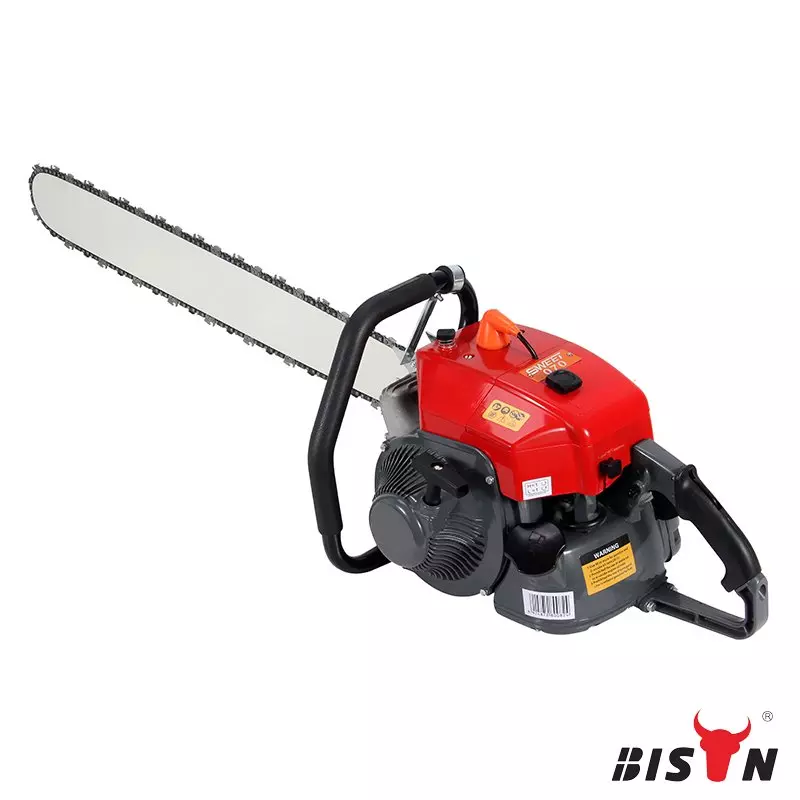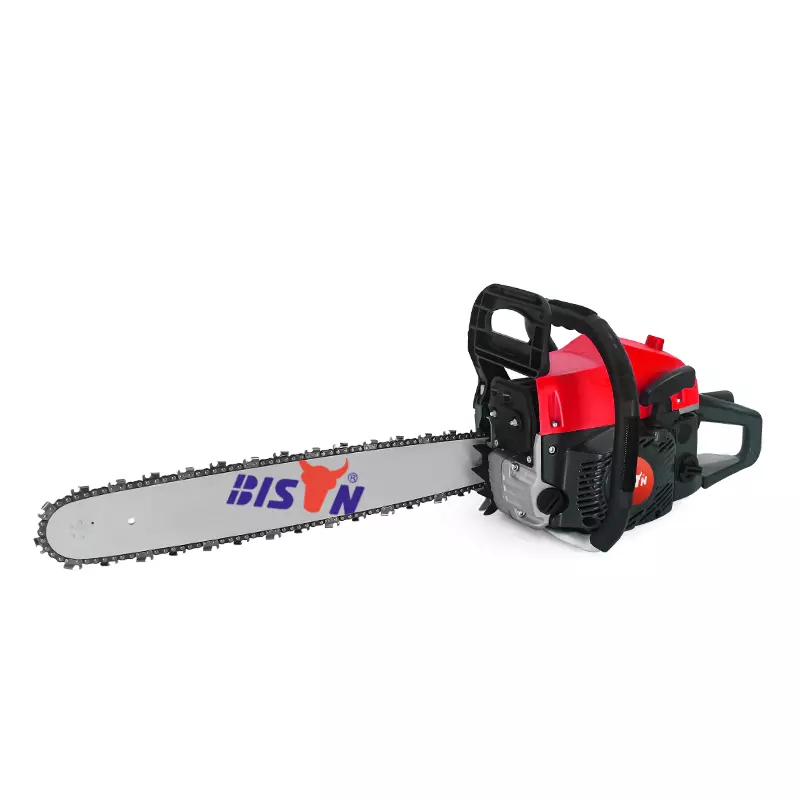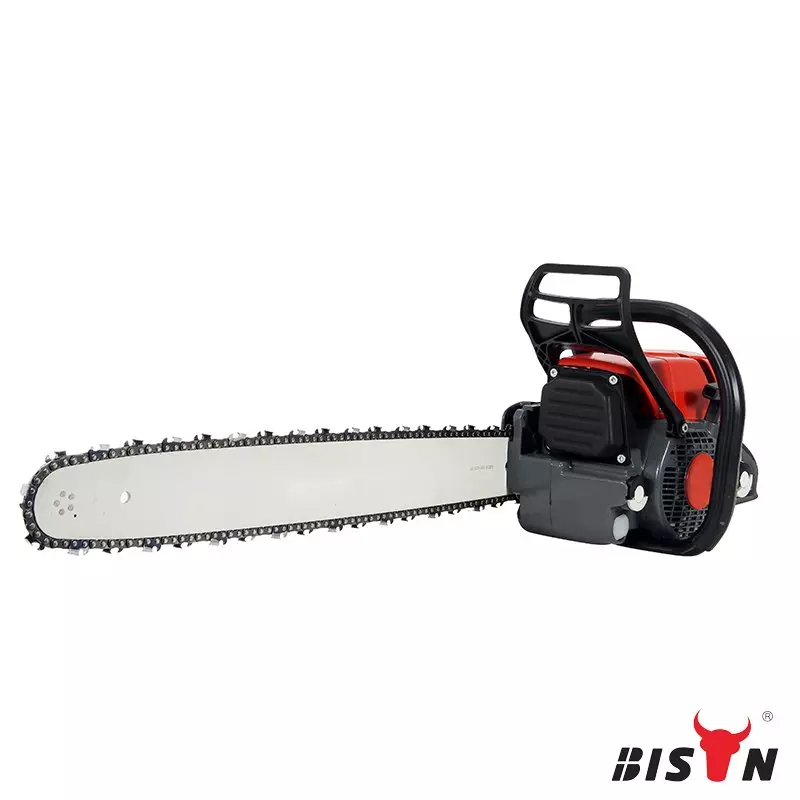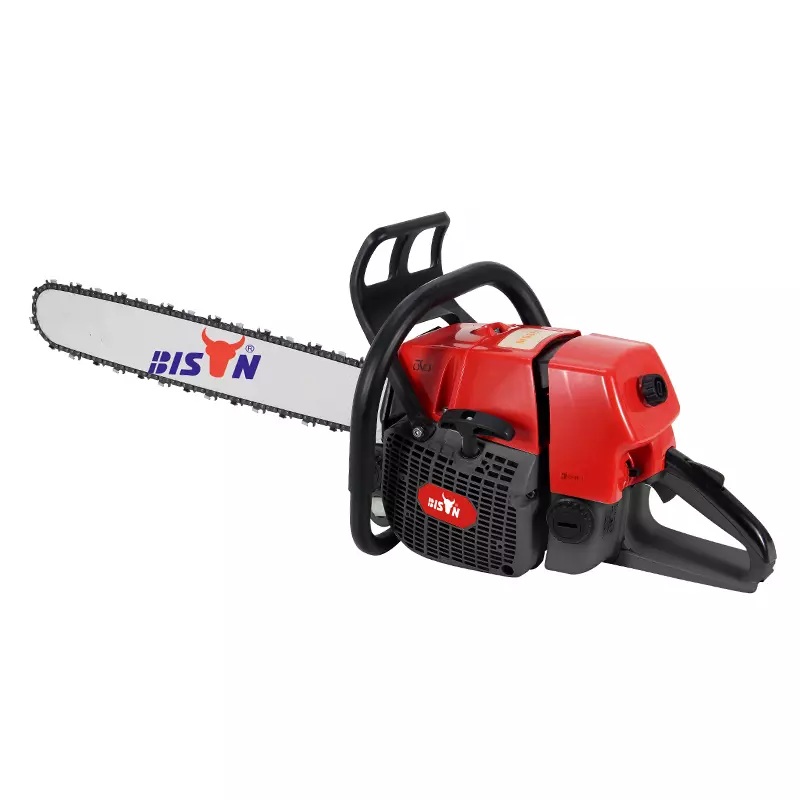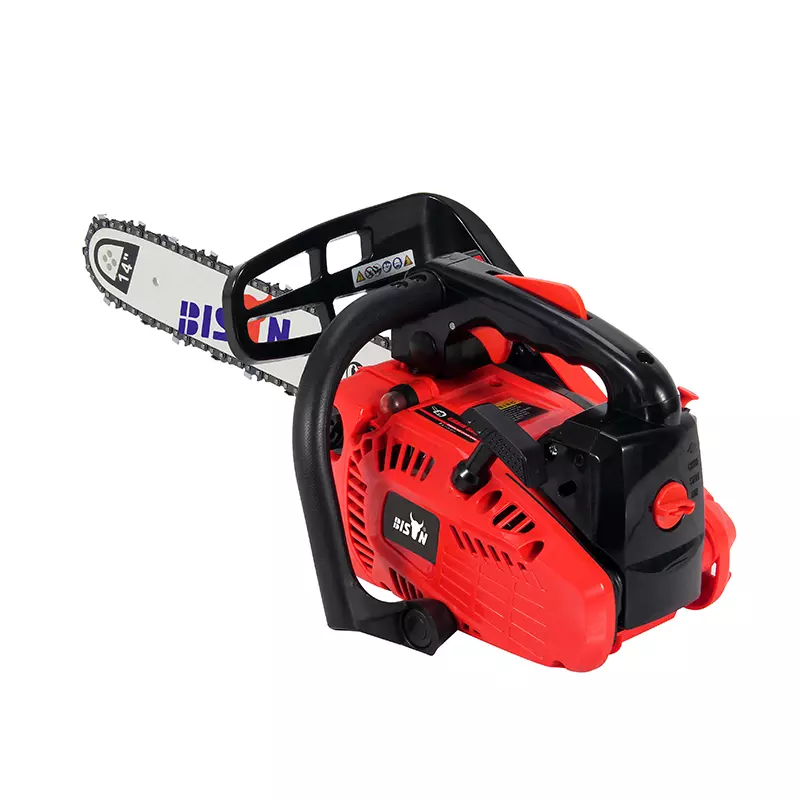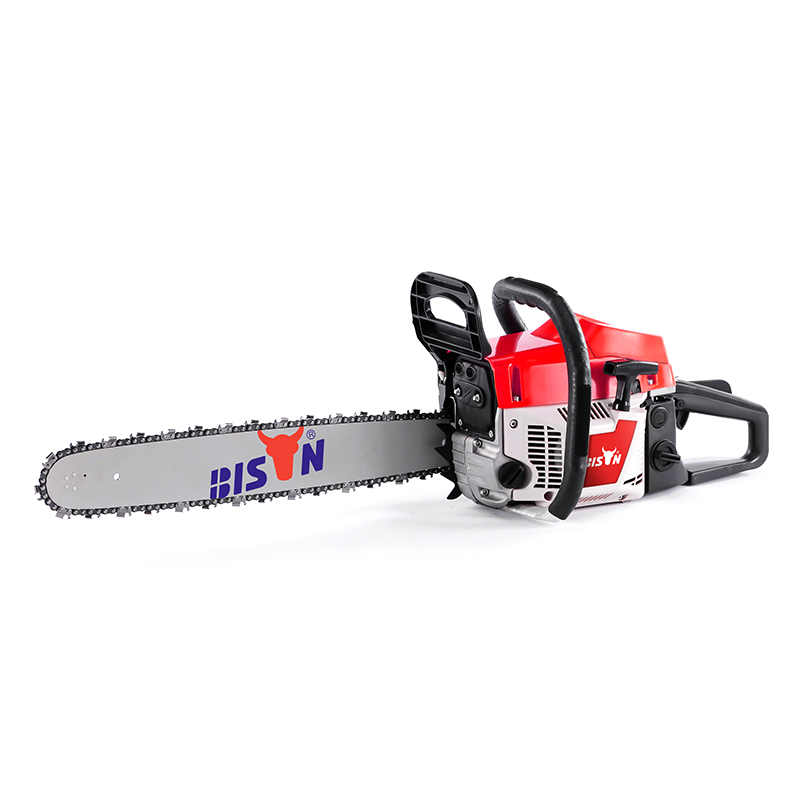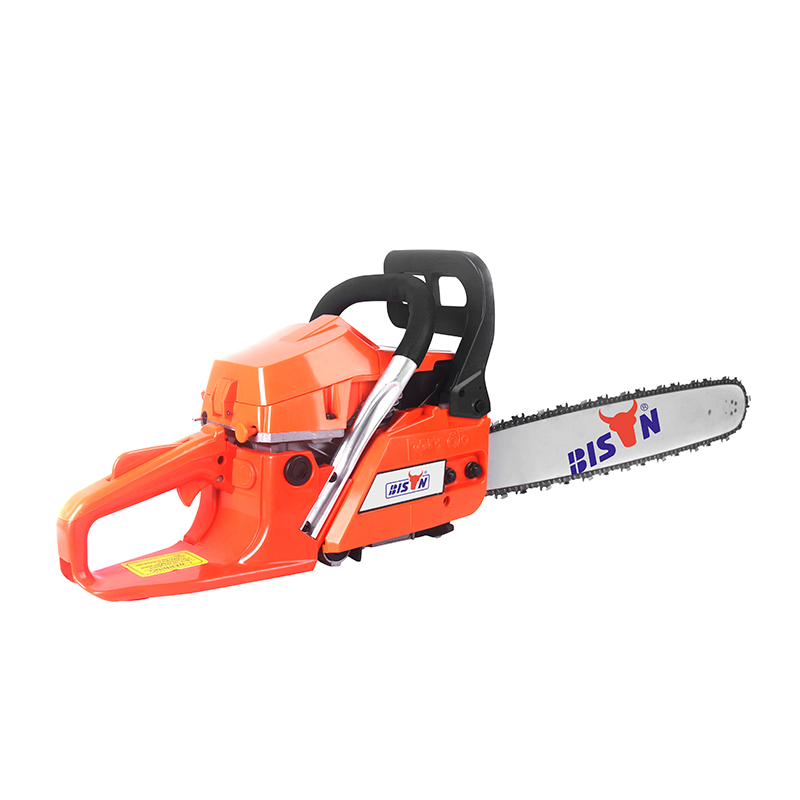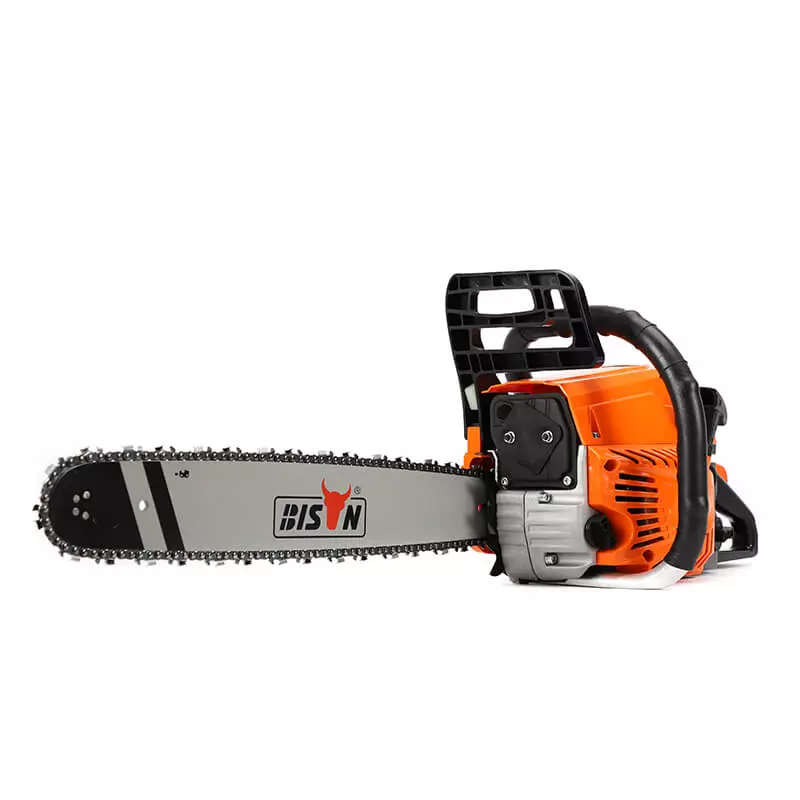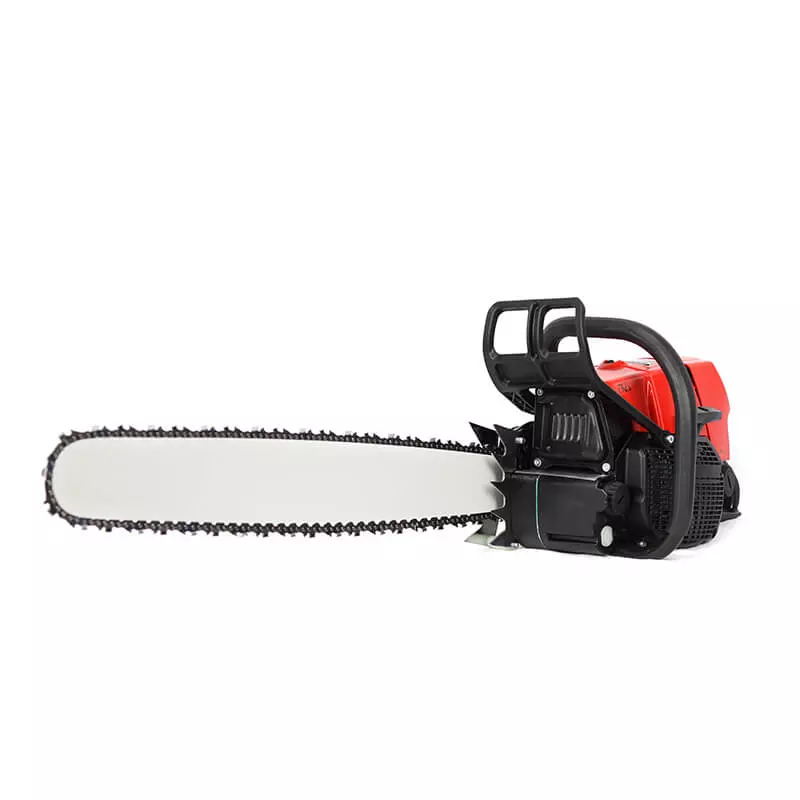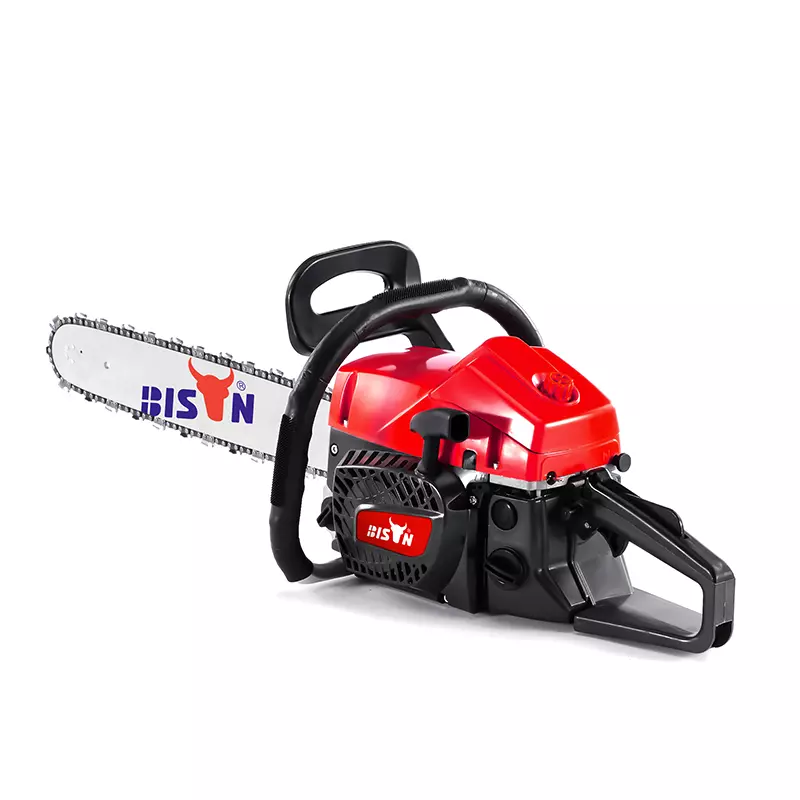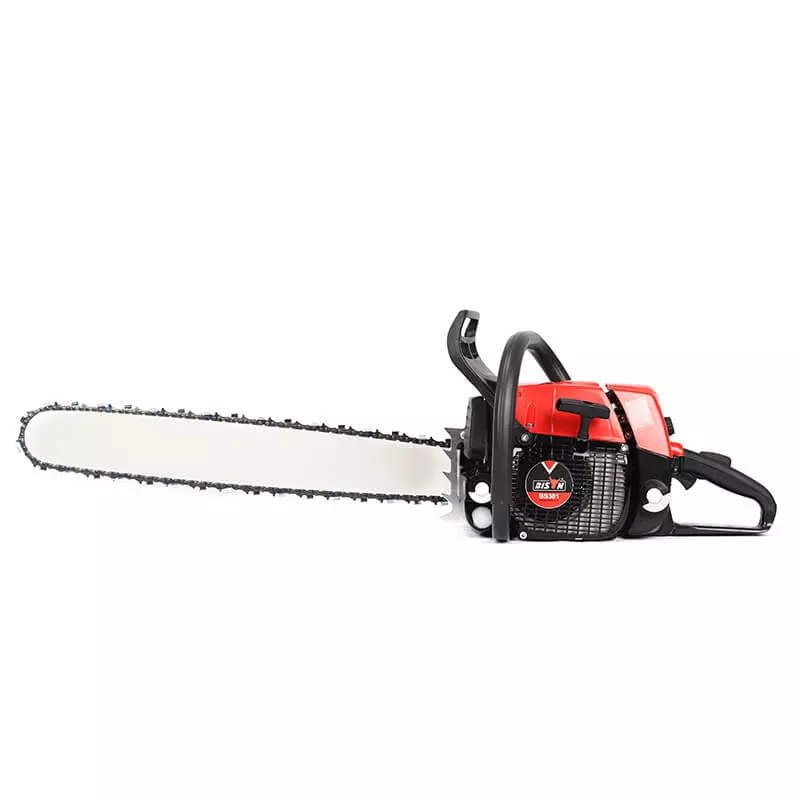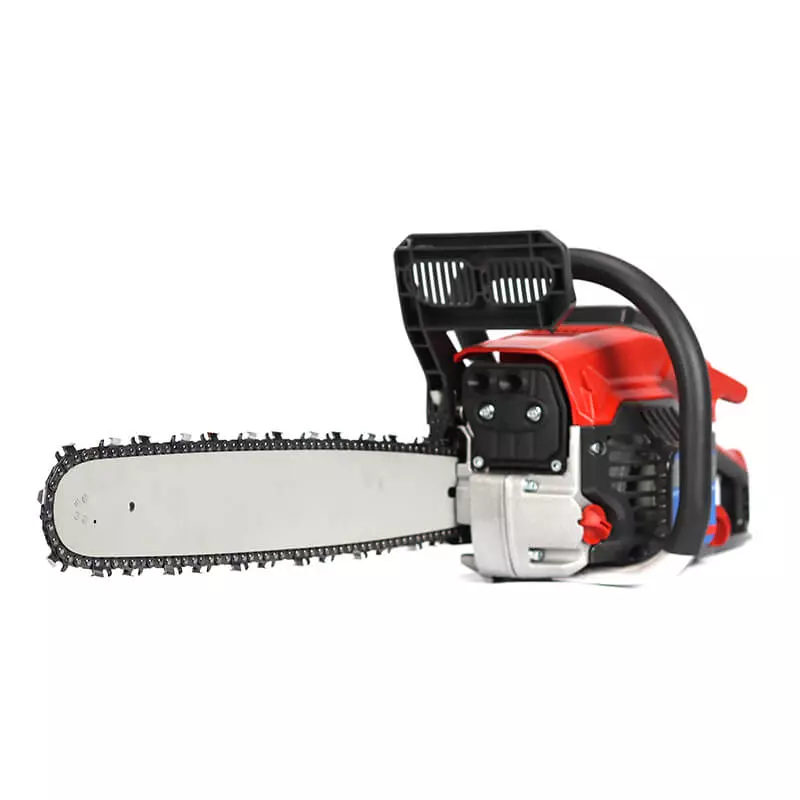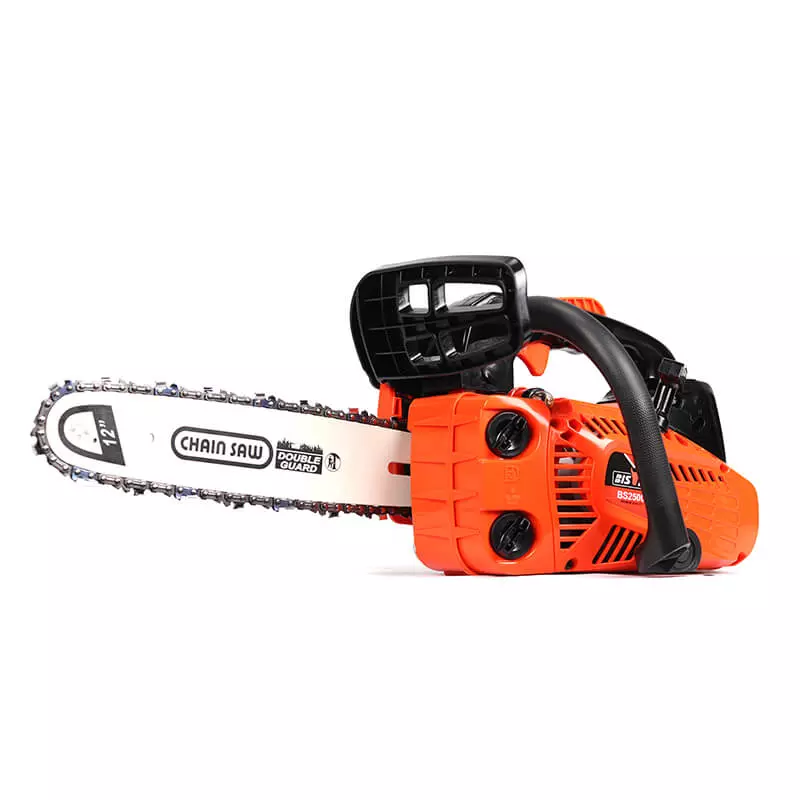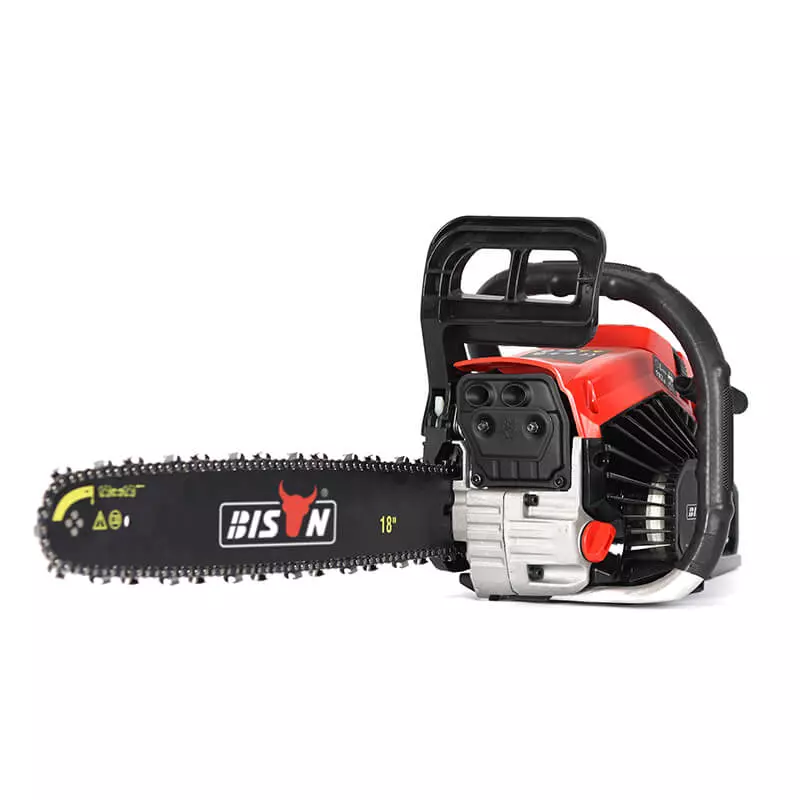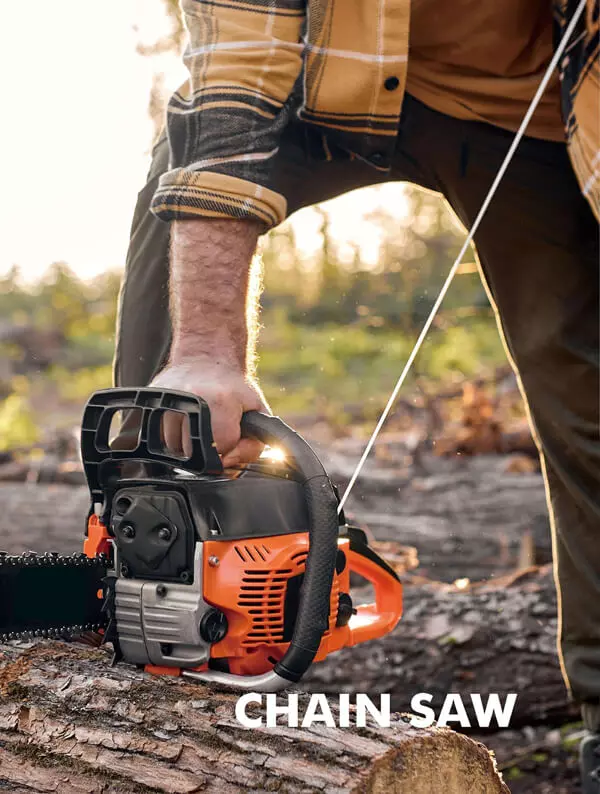What is a gasoline chainsaw?
A chainsaw can be explained by its name, the first clue you should know. A gasoline chainsaw is a machine that cuts with teeth attached to a rotating chain running along a guide bar. It is used in tree felling, limb cutting, bucking, etc. BISON gasoline chainsaws are the best in the business. With high efficiency and accuracy coupled with long life and innovative technology, they can make work easier and faster.
A gasoline chainsaw has a chain, like a bicycle, which runs around sprockets (gear wheels designed to turn the chain) with thirty or so sharp teeth (made of a hardened steel alloy). Intervals are installed around it. The piston pushes a connecting rod that turns to the crankshaft as it enters and exits the engine. The chain rotates when the crankshaft rotates gears attached to one of the sprockets the chain is mounted on.
How to choose the right gasoline chainsaw
Choosing the perfect gas chainsaw for your needs requires careful consideration of several key factors. The following guide can help you make an informed decision. Here are some factors you should consider before making a choice. You may need to do some market research to draw your conclusion.
Frequency of use: Determine how often you will use your chainsaw. Occasional users may choose a lower-powered model, while frequent users, such as professional landscapers, will need a more powerful machine.
Type of cutting task: Determine the type of tasks you will be performing, such as light pruning, chopping wood, or felling large trees. A small chainsaw may be sufficient for light to moderate use around the house. Choose a larger, more powerful model for professional logging or extensive tree felling.
Budget: Consider how much you are willing to invest. While more powerful, feature-rich models are more expensive, they also offer better performance and durability.
Engine size and power
Engine size, measured in cubic centimeters (cc), directly affects the power output of a chainsaw. A higher cc rating means more power, making it suitable for larger, tougher cutting tasks. For example, a 30cc to 50cc engine is usually sufficient for general use, while professional-grade chainsaws are usually over 50cc for maximum power and efficiency.
Bar length
Bar length determines the cutting capacity of a chainsaw. Shorter blades (12-16 inches) are suitable for small trees and branches, while longer blades (18-24 inches or longer) are suitable for felling larger trees and heavy-duty cutting tasks. Matching the blade length to the size of the tree and the type of work being done is critical for efficiency and safety.
Weight
A lighter chainsaw handle is more maneuverable, reducing fatigue during prolonged use. However, balance the weight with the power required for your intended applications.
Chain type and features
Chainsaws come with different types of chains, each suitable for specific tasks:
Full chisel: Best for fast, powerful cutting, but can become dull quickly
Half chisel: Balances cutting speed and durability.
Low kickback: Designed for safety, especially for inexperienced users.
Anti-vibration: Reduces user fatigue and makes long-term use more comfortable.
Fuel Efficiency
Evaluate fuel capacity and consumption rate to ensure your chainsaw can get through long hours without frequent refueling. Efficient use of fuel not only saves money, but also reduces environmental impact.
Safety features
Safety should be a top priority when choosing a chainsaw. Look for models equipped with the following features to increase user safety during operation.
Chain brake: Stops the chain immediately in the event of kickback.
Throttle lock: Prevents accidental acceleration.
Hand guard: Protects hands from flying debris and contact with the chain.
Additional features
Consider additional features that enhance usability:
Anti-vibration system: Reduces fatigue during long-term use.
Automatic oiler: Ensures the chain is always lubricated.
Tool-free chain tensioner: Allows for quick and easy adjustments.
Pressure release valve: Facilitates easy starting.
Ergonomic design: The comfortable grip and ergonomic design enhance control and reduce user fatigue. Make sure the chainsaw is well-balanced for better handling.
gasoline chainsaws maintainance
Always disconnect the spark plug before doing any maintenance to avoid unintentional starting. Follow the manufacturer's guidelines in the user manual for specific maintenance requirements.
Clean the air filter regularly with soap and water. Make sure it is scorched before reinstalling.
Check the spark plug frequently and replace it if it is dirty or damaged.
Replace the fuel filter every six months to prevent clogging and ensure smooth operation.
Sharpen the chain using a chainsaw file every three hours or after refueling.
Use the fuel and oil that are advised and kept in a cool, dry location.
Basic safety when working with a chainsaw
Here are a few safety measures to follow when operating a chainsaw. Always wear the appropriate personal protective equipment, such as gloves, goggles, helmet, earmuffs. Note that these safety rules also apply to using other power tools, including the following:
Don't work on-site alone; work with a colleague so someone can help in case of injury.
Keep a safe distance of about 3-5 meters from the blade when working with a chainsaw. During the felling of trees, a safer distance is required.
Keep a firm grip on both handles on the saw. To be ready for potential kickbacks, encircle the handles with your fingers and thumbs.
Keep the chainsaw close to your body for better balance and a less heavy saw feel.
Stand with your feet apart. Place your left foot slightly in front of your right to achieve the best possible balance. When working in low positions, do not work with a bent spine.
When moving to another location within the site, you must activate the chain brake or switch off the engine to avoid danger.

Are you looking to expand your chainsaw supply with a reliable and in-demand gasoline chainsaw? Consider partnering with BISON and becoming an authorized dealer of our top-rated gasoline chainsaws.
We offer a wide range of chainsaws to suit every need:
Occasional Use Models: Perfect for homeowners and hobbyists.
Semi-Professional Models: Ideal for frequent use and medium-duty tasks.
Professional Models: Designed for the most demanding jobs with superior performance and durability.
Contact us today and we will help you achieve new success with our top-rated gasoline chainsaws.

